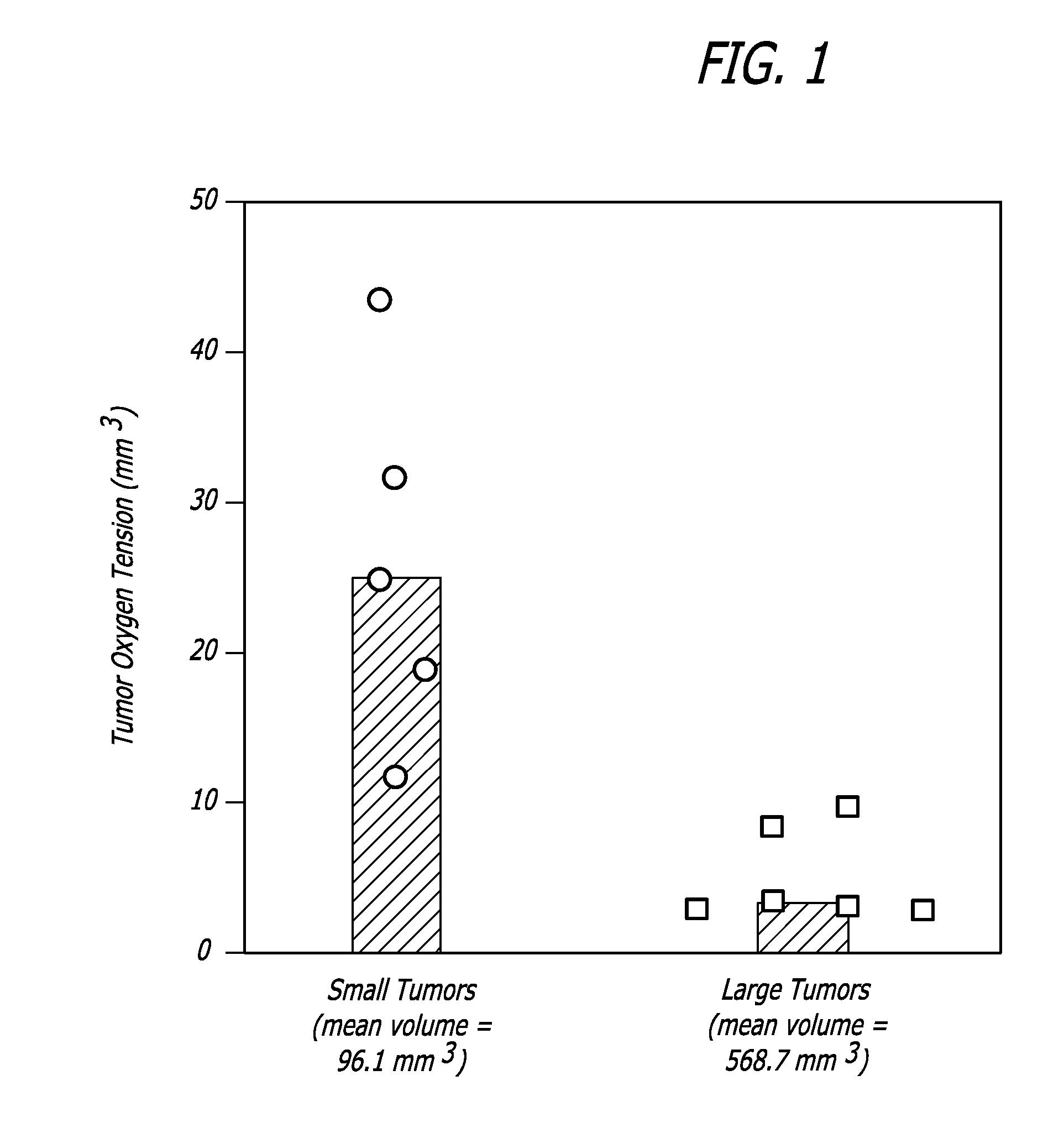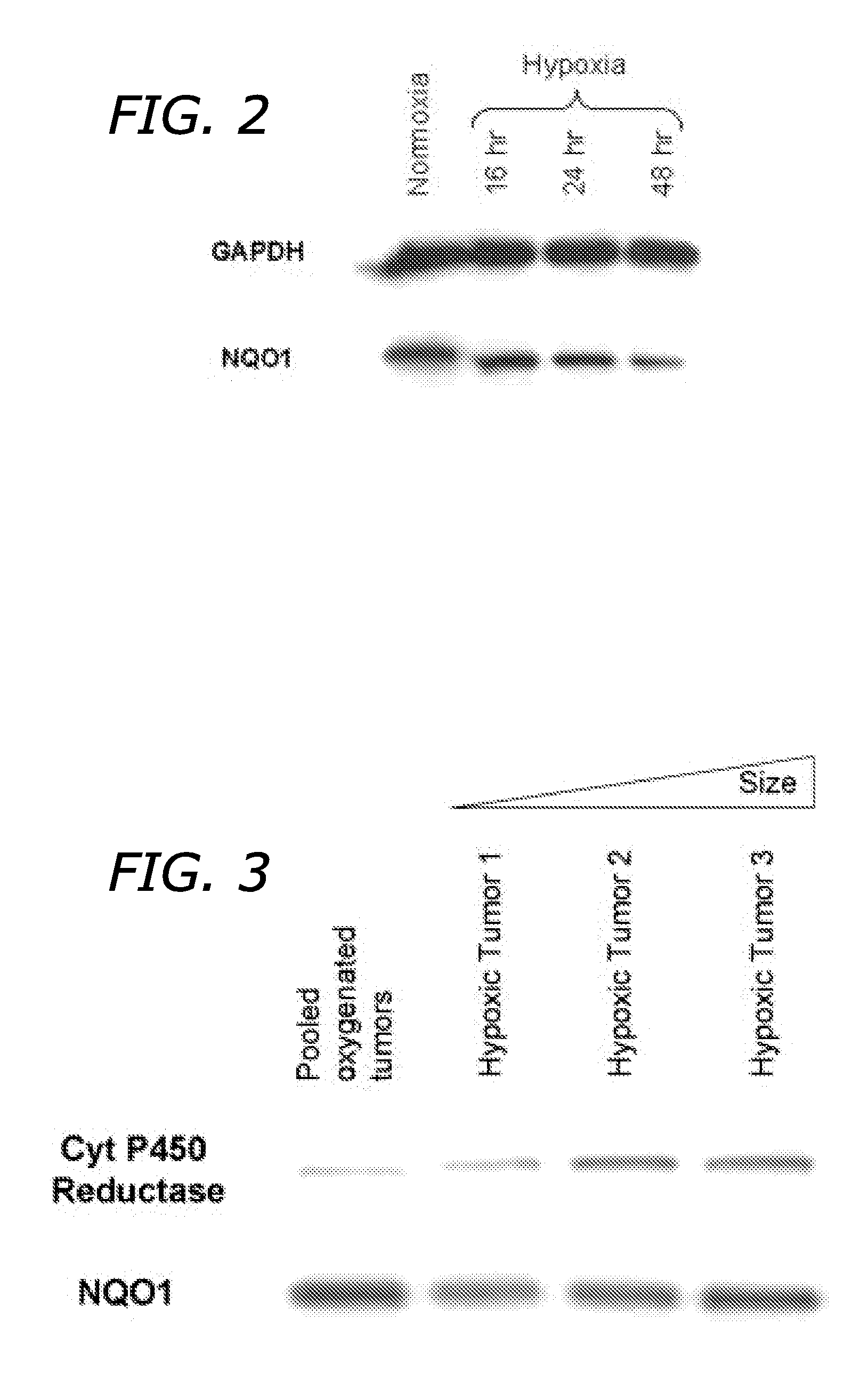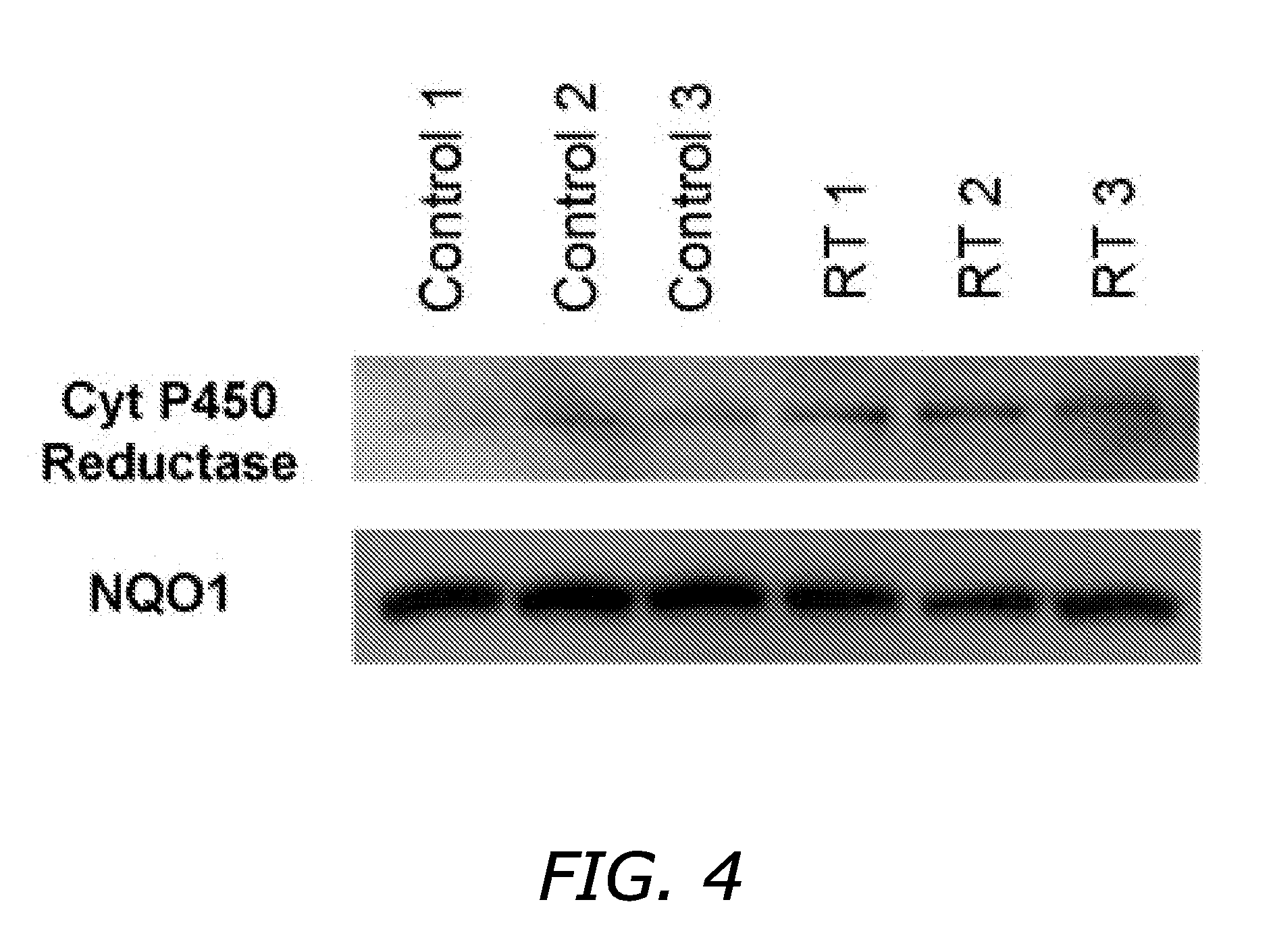Indoloquinone Tumor Radiation Sensitization
a technology of indoloquinone and tumor cells, applied in the direction of biocide, heterocyclic compound active ingredients, drug compositions, etc., can solve the problems of poor drug delivery to tumors, cells that are more resistant to radiation therapy or chemotherapy, and reduced effectiveness when used to treat tumors containing hypoxic cells
- Summary
- Abstract
- Description
- Claims
- Application Information
AI Technical Summary
Benefits of technology
Problems solved by technology
Method used
Image
Examples
example 1
Effect of Tumor Volume on Tumor Oxygen Tension
[0042] U-87 human glioblastoma cells (American Type Culture Collection) were maintained in alpha MEM medium (Sigma) with 10% fetal bovine serum (Atlanta Biologicals). U-87 human glioblastoma cells (5×105 cells in 100 μl PBS) were injected subcutaneously into the right hind limb of athymic NCR NUM nude mice (Taconic Farms) and allowed to grow to a hypoxic volume of ˜550 mm3. Tumor oxygen tension was measured using the Oxford Oxylite fiberoptic probe (Oxford, England). The detection system is based on blue light excitation of ruthenium pigment at the end of a fiber optic probe, which is quenched by oxygen. Measurements were performed on anesthetized mice (75 mg / kg Ketamine and 0.3 mg / kg Acepromazine), while body temperature was maintained at 37° C. with a heating pad. A 25 gauge needle was used to puncture the tumor capsule to facilitate insertion of the fiberoptic probe. The probe was guided into the tumor at a 2-4 mm depth. FIG. 1 shows...
example 2
NQO1 and Cytochrome P450 Reductase Levels in Hypoxic Tumors
[0043] As described, U-87 human glioblastoma cells were injected subcutaneously into the right hind limb of athymic NCR NUM mice and allowed to grow to a diameter of ˜550 mm3 to induce hypoxia. Tumor samples were prepared in LDS Sample Buffer (Invitrogen, Carlsbad, Calif.) containing 40 mM dithiothreitol, 14 mg / L aprotinin, 0.7 mg / L pepstatin, and 5 mM 4-(2-aminoethyl)-benzenesulphonyl fluoride. Samples were resolved on NuPage 10% bis-Tris gels (Invitrogen, Carlsbad, Calif.). The proteins were transferred onto polyvinylidene difluoride membranes (Amersham Pharmacia Biotech, Piscataway, N.J.) using a semidry transfer apparatus (Pharmacia-LKB multiphor II). Immunoblotting was performed with monoclonal and polyclonal antibodies: anti-human NQO1, anti-human Cytochrome P450 reductase and anti-GAPDH. Immunodetection was performed by enhanced chemiluminescence using a Tropix Western-Star protein detection kit (Applied Biosystems; ...
example 3
Effect of EO9 & Radiation Therapy on Average Tumor Volume
PUM
| Property | Measurement | Unit |
|---|---|---|
| hypoxic volume | aaaaa | aaaaa |
| hypoxic volume | aaaaa | aaaaa |
| body temperature | aaaaa | aaaaa |
Abstract
Description
Claims
Application Information
 Login to View More
Login to View More - R&D
- Intellectual Property
- Life Sciences
- Materials
- Tech Scout
- Unparalleled Data Quality
- Higher Quality Content
- 60% Fewer Hallucinations
Browse by: Latest US Patents, China's latest patents, Technical Efficacy Thesaurus, Application Domain, Technology Topic, Popular Technical Reports.
© 2025 PatSnap. All rights reserved.Legal|Privacy policy|Modern Slavery Act Transparency Statement|Sitemap|About US| Contact US: help@patsnap.com



